| Material
|
Bronze, Iron and Enamel |
|
Dimensions |
Top: 3.0cm long x 1.7cm wide 0.7cm deep.
Bottom: 2.5cm long x 1.4cm wide |
|
Roman Empire |
4th Century AD |
|
Description |
|
A
beautifully decorated complete bronze seal box. This item is in the shape
of a lamp and falls within that categorized type. The top or lid has
a large majority of the colored enamel still showing. This includes
a deep blue, with a white circle in the center. The edges of the lid
have the remnants of a red enamel.
The point of the lid has an engraved concentric circle with a crescent at
the top that patterns the remainder of the way down to the bottom of the
seal box.
The sides and the bottom have the typical slots and holes that are
commonly associated with seal boxes. The lid has a small raised tip at the
end which fits in to the opposing hole, helping keep the lid nice and
tight and squared. Amazingly the interior of the box actually still
retains a large portion of the original bronze color. Since the
interior was sealed with dirt, it limited the exposure to the oxidization
that the exterior experienced.
The rear portion is hinged with a piece of iron, now mainly corroded, but
still clearly in place.
The under side portion which is composed of slightly angled side walls,
has three concentric ringed holes.
Overall the piece is in magnificent shape considering its age, still
showing the bright colors that it was originally made with. A piece
like this would have taken considerable time and effort to craft.
What were seal boxes?
That question has been raised more in recent years due to the fact that
there still remains very little clear evidence as to their exact use.
The major theory at this point is that they were used to seal the string
of a bound writing tablet. Whereby the stings of the item were fed
into the holes and sides eventually tied inside the hollowed area.
Wax was then poured onto the knot and then impressed with a seal from a
ring. This allowed the item to be secure and safely covered during
transport. One seal box has been found with the remnants of the
bee's wax seal still inside of it. The reason that that things are
not 100% defined is that in many locations very few seal boxes have been
found, specifically in Pompeii. It is believed that these seal boxes
were in use more on the frontier and constituted part of the military mail
system. The frontier obviously had the vast majority of soldiers,
specifically the ones stations at the forts on the northern front. (1)(2)
Click on
Pictures for higher resolution
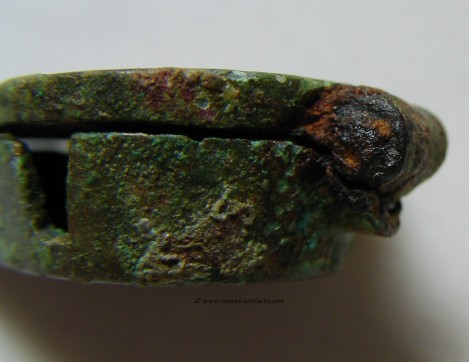
Hinge View
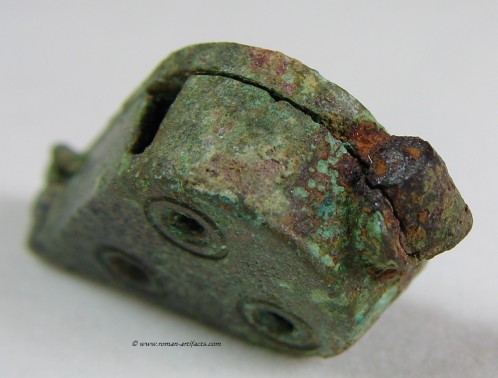
Hinge View3
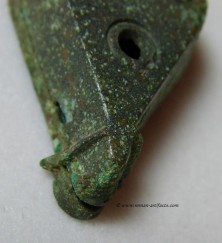
Front Bottom View
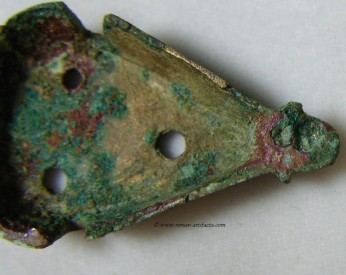
Holed Front View |
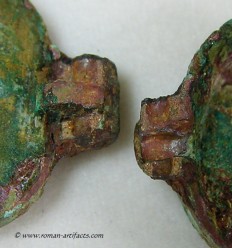
Hinge View2
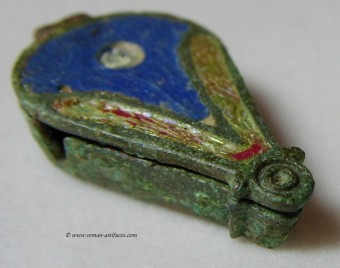
Front View
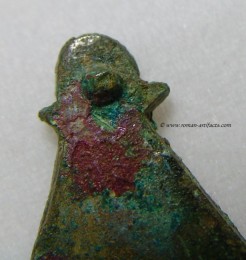
Front View2 |
| 